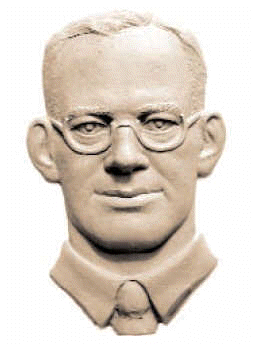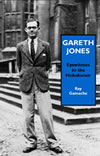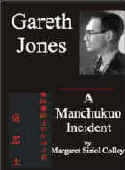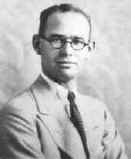Gareth Jones
[bas relief by Oleh Lesiuk]
HOME |
Stop Press |
Complete Soviet Articles & Background Information |
Précis of Gareth's
|
All Published Articles |
BOOKS
|
|
|
|
More Than Grain of Truth(2005) |
|
|
TOPICAL
'Are you Listening NYT?' U.N. Speech - Nov 2009 |
Gareth Recognised at Cambridge - Nov 2009 |
Reporter and the Genocide - Rome, March 2009 |
Order of Freedom Award -Nov 2008 |
Premiere of 'The Living' Documentary Kyiv - Nov 2008 |
Gareth Jones 'Famine' Diaries - Chicago 2008 |
Aberystwyth Memorial Plaque 2006 |
GENERAL
Scholarship Fund |
Site Map |
Links |
Legal Notices |
Sponsored Links |
Contact |
|
||
ByGareth JonesI HAVE discovered in the village of Brechfa, nestling in the Cothi Valley, a rival to all the legendary or sacred animals whose deeds have enlivened the annals of mankind, just a jet black bird - or rather the memory of a black bird - Bob the Raven. One afternoon after I had wondered at the beauty of five counties from Pencrugmelyn I descended into Brechfa and went to chat with Joe Sivell, the landlord of the Forest Arms. A rare host he is! What tales he has of Cambridge back in the ‘eighties when he was a groom and coachman for Colonel Gwynne Hughes, Tregib! What stories he can tell of red-coated huntsmen flying past Brechfa with the foxhounds panting and the fox escaping! But the escapades of the raven who was at one time both the scourge and the delight of Brechfa. I saw Bob the Raven. He was silent, stuffed in a glass case. I felt like repeating the words of Mark Antony over the body of Caesar: “Now lies he there And none so poor to do him reverence.” I had seen Napoleon’s tomb in Paris. I had beheld Lenin in Moscow. I had gazed at Lincoln’s burial-ground in the United States. And there I stood in awe before the Bird of Brechfa, who once lived to earn the curses of many, but the affection of all. Bob was a raven, the pet of Joe Sivell at the Forest Arms, and trained to be the devoted friend of his master. By what magic Joe contrived to make a wild bird into a creature with human qualities and human prejudices I do not know. But I do know that Bob knew a trick or two which would put the most mischievous of schoolboys in the shade. When the children were on the way to school he would dart down, seize a child’s cap, and fly away with it to a field. Sometimes he would make a collection of caps, and Joe remembers finding five of them together in one field. Did the children bear Bob a grudge for that? Certainly not. What better excuse could one offer teacher than “Bob has taken my cap?” And the chase to recover it was a thousand times more exciting than the dull repeating of the ten times table! What the children liked above all was to see Bob seize a penny or a halfpenny which was thrown at him and fly away. He would then drop the coin and cover it up with stones. Many a packet of sweets was bought at the village shop from Bob’s buried treasure. If Bob enjoyed a game with the children there was one man he did not like, and that was the parson. Whether Bob was a Nonconformist or perhaps an Atheist or whether he held particularly Low Church or High Church views I cannot say. Anyhow, he never lost an opportunity of torturing the parson. When the parson had put in cabbage plants, Bob would watch him, and as soon as the parson was out of sight he would pounce, pick them out of the earth, and strew them on the garden path. He once took it into his head that the parson did not deserve a roof to his head, and with Machiavellian cunning he began to take the straws one by one from the thatch. There was one place which he had no wish, however, to destroy in the parson’s home, and that was the spout, which was the secret resort of the scoundrelly bird after his piratical excursions for chickens’ eggs. Carrying his booty in his mouth, one egg at a time, he would fly to the spout, suck the egg with the delight of a gourmand, and leave the shells, until the whole troughing was littered with them. Sometimes Bob would go beyond the bounds of humour and become positively dangerous. Joe Sivell twinkled when he told me: “Bob would wait until a carter came for a drink and left his horse outside. Then he’d quietly get on the back of the horse. Suddenly he’d dig in with his sharp beak. The horse would gallop off.” I can imagine the wrath and the curses of the carter, and I even think that Bob must have had some guffaws at his own pranks. If he could not guffaw there is no doubt that he could talk, for Joe Sivell assures me that he would say: “Come along! Come along!” and could whistle delightfully. Bob had a profound sense of the dramatic, and one of his deeds - or rather misdeeds - has all the elements of a nineteenth century tragedy. A collier from Tumble had walked all the way past Brechfa to Gwernogle in order to see his mother, who was lying dangerously ill. On his way back, when his mother was still in a critical state, he was approaching Brechfa, and saw a big black bird on a gate. What could it be? It was too big for a crow. Could it he a bird of ill-omen? The collier shuddered and walked on. On the next gate he saw the same bird perched and staring at him. The collier was terrified, and although his knees were trembling, he increased his pace. When on the third gate he saw the dread creature he was caught by panic, and he fled until he arrived as pale as a ghost at the inn. Imagine, however, the climax of his horror when he looked at the graveyard across the road and there saw the raven sitting triumphant on a tombstone! Bob the Raven, when you were alive you gave Brechfa pain and pleasure; you caused the villagers anger and amusement; you were human in your jokes, your tricks, your likes and dislikes. Now that you are dead, may the tales about your wondrous feats grow bigger and bigger. May your human traits become superhuman in the imagination of the people; may the word “wizardry” be brought m to explain your adventures; in short, may you become a legendary figure so that our age of machinery may also have its share of fantasy and childlike charm. And I think, Bob, that you will live on, for your tale has all the elements of wonder and of magic which may, in a few generations’ time, make you into a cherished part of the folklore of our country. August 19tb, 1933. |
GARETH JONES (1905 -35) |




